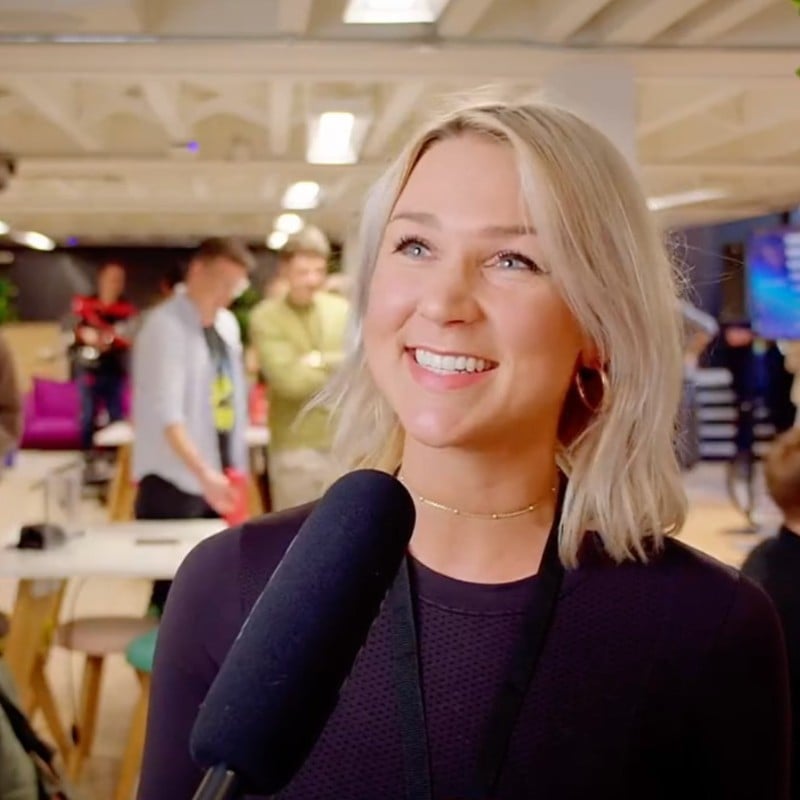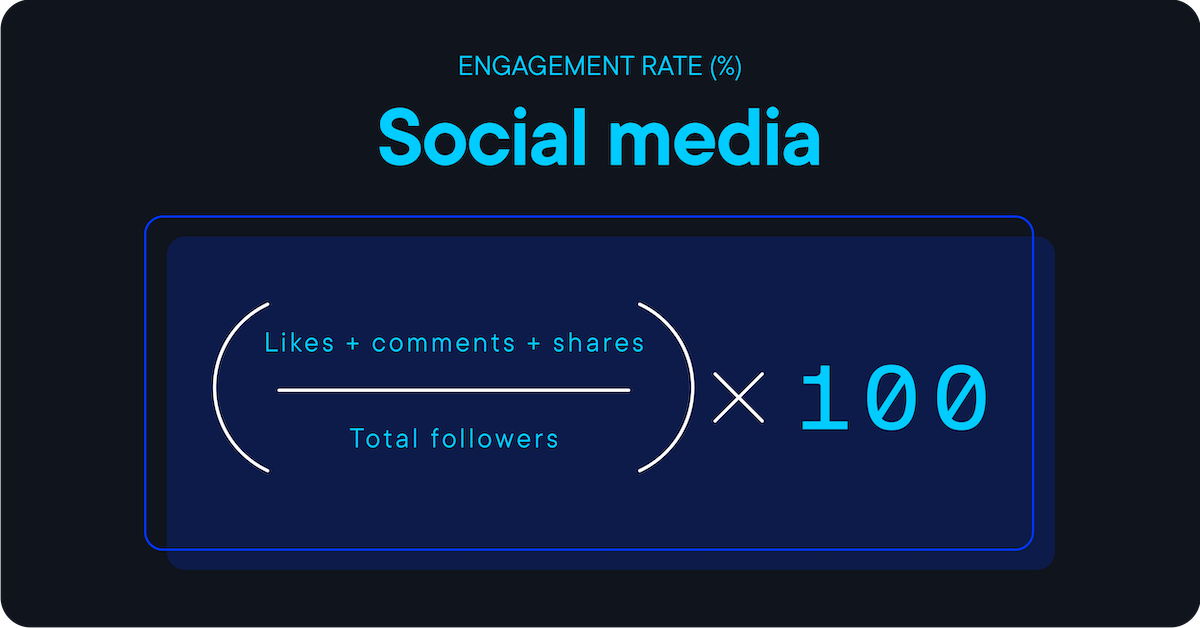A guide to employee advocacy: What it is, how it works and what's in it for you


Employee advocacy. Two words that you are almost guaranteed to have heard from your social media team in the past couple of years (whether your brain digested them or not).
In this guide, we'll run through everything you need to know about employee advocacy, including what it is, how it works, and – of course – what's in it for your marketing team, your company, and YOU.*
*Hint: One very happy social media team cheering you on, and more.
A quick social media 101
Before we dive into employee advocacy, let’s quickly cover the basics of social media and its importance to business growth. In these digi days, social media is an indispensable tool for any marketing team.
Why is social media important to business growth?
- Generates excitement: Showcase your company’s activities, product launches, achievements, events – the whole shebang – to create a buzz around your brand.
- Builds brand recognition and brand awareness: Keep your brand top-of-mind for your target audience with a consistent presence on social media.
- Connects with diverse audiences: Engage with all the people that matter, from industry peers to potential customers to current clients.
- Improves your brand’s authority: Establish yourself as an industry expert by sharing valuable content and insights, boosting brand engagement too.
- Increases your own visibility: Build your personal brand within your industry to boost your connections and engagement within your space.
While most companies have dedicated teams to manage their social media presence, there's a beauty to social media: you can contribute too. In fact, you guys can play a significant role in boosting your brand’s social media performance, making a real impact.
And this is where employee advocacy comes in. 🦸
What is employee advocacy?
Employee advocacy is all about sharing your company’s content, achievements and general good vibes on your personal social media accounts.
Here are some examples of employee advocacy in action:
- Posting about your company’s latest product or upcoming event
- Sharing that fun, educational blog from marketing
- Talking about how much you dig your job
It’s kinda like a virtual high five to your employer, and spreads that love with all LinkedIn (or other platform) connections.
The benefits of employee advocacy
Okay, but WHY employee advocacy? What’s are its benefits? Well, that can be split into three different perspectives:
How employee advocacy benefits your social media team
🤗 Sharing is caring: Whether you’re sharing the company posts, tagging your company, or hitting up those employee advocacy tools, your social media team is getting the recognition it deserves.
🐝 Creating a buzz: Seeing you guys get excited about your brand and content on social media is hard not to love, especially when it’s part of your *actual* job.
📣 Broader reach, bigger impact: Like social media megaphones, employee advocates blast brand messaging to way more people than your company pages alone ever could.
How employee advocacy benefits your company
💍 Engagement better than any diamond ring: Employee shares turn networks into sales funnels, helping with brand education.
🤑 More leads, more sales: More brand recognition and brand awareness will work wonders on that sales pipeline, and hopefully conversions.
👍 Happy HR and recruiters: Working together to boost your company’s social media presence is great for company culture – not to mention recruitment.
How employee advocacy benefits YOU
🤔 Thought leader status unlocked: Share your expertise, unique perspective, general rambles to establish yourself as an influencer (or just a fun person to follow) in your field.
🏅 Recognition at work: Interacting with your company’s audience can open doors to partnerships, events, speaking at events, and all that good stuff.
🤝 More valuable connections: Participating in advocacy shows your employer that you’re a dedicated and enthusiastic brand ambassador – and that’s never a bad thing.
Getting started: Your posting essentials
It’s fair to say, there are a lot of unspoken rules on social media – you know, how long your posts should be, how many hashtags to use, how often is too often to post... the list goes on.
If you don’t know where to start, we’ve laid it all out for you:
Hashtags
Tip #1: Use hashtags that relate to your content but aren’t overly specific, eg. #AI instead of #ILoveUsingAI because people are more likely to search for – or find your post – with a more generic hashtag.
Tip #2: Don’t overuse hashtags – while they can get your content found, too many hashtags can be off-putting. Use no more than 3 hashtags per post.
Tip #3: Hashtags should be added to the end of your post, unless you can include them seamlessly into a sentence. So, they could look something like:
- “Today, let’s talk about Optimizely’s #AI capabilities!”
- “Optimizely’s AI assistant, Opal, is a lifesaver! Opal is always by my side, assisting me through the entire marketing lifecycle. #AI #Marketing #ContentCreation”
Graphics
Tip #1: If you’re able to choose the graphic on your social media post, make sure it provides value – it’s likely the first thing that will grab readers’ attention and entice them to read the rest of the post.
Tip #2: When it comes to visuals, specifically for LinkedIn, consider mixing up formats you can use, including single image, carousel posts, and video.
Tip #3: Size does matter so make sure you are clued up on platform guidelines for image sizes and quality – if you’re not sure, your design team will know what’s up.
Post length
Tip #1: Generally, it’s best to keep posts short and sweet to really get people’s attention... and your engagement rate up.
Tip #2: Here are the ideal lengths of organic social media posts for each platform if you’re looking for optimal level of engagement:
- Facebook: 1-80 characters
- Twitter: 71-100 characters
- Instagram: 138-150 characters
- LinkedIn: 140 characters (AKA before it gets cut with a “See more” button)
Employee advocacy tools
When you’re short on time, feel bit stuck or low on imagination for a super fun, hard-not-to-like social media post, employee advocacy tools are a great solution.
Using an employee advocacy tool makes everyone’s lives easier; your social media team will upload pre-drafted posts into the platform, ready for you to share via your personal accounts.
Given its positive impact for businesses, it’s likely your social media team has an employee advocacy tool in place. It's also likely they’ve been emailing you or messaging the company Slack channel to get involved, but we’ll move on swiftly from that.
Here are some examples of employee advocacy tools (that might jog your memory):
- Hootsuite Amplify
- Sprout Social
- EveryoneSocial
- PostBeyond
Social media metrics
To measure the success of your posts (and to work out where you could improve), there are 3 key social media metrics for you to keep an eye on:
- Impressions: How many times your post has been viewed
- Number of engagements: Amount of reactions, likes, comments, and shares
- Engagement rate: Level of engagement generated compared to impressions

3 ways to increase your post engagement on LinkedIn
- Testing out different content formats: Try mixing up your social media posts with different formats to see how your audience reacts. For example, incorporate polls, open-minded questions, carousels, GIFs, long copy, short copy, and so on.
- Engage with other people’s posts: If you like or comment on other posts (whether they’re by influencers, industry experts, or your colleagues), they will often reciprocate which leads to increased engagement.
- Post regularly: Embrace the power of presence; by sticking to a regular posting rhythm, you’ll become a familiar face in your audience’s feeds (and one of LinkedIn’s faves), keeping your message front and center.
How to create a social media framework
If you’re going to keep momentum with your social media posting, you want to build a posting framework that works for you and resonates with your audience. This allows you to rotate through different topics without stress.
To do this, you need to:
- Define your objectives: Clearly outline what you want to achieve with your social media presence eg. increasing brand awareness, customer engagement, link traffic.
- Identify your audience: Consider demographics, visitor segmentation, interests and behaviors to make sure you’re reaching (and resonating with) the right audience.
- Consider your content types: Think about different types and forms of content – this could be anything from personal anecdotes to promotional and educational content.
- Modify as you go: Closely monitor how each of your posts perform – if engagement is lower than you’d hoped for, then it might be time to switch up or rethink your framework.
Examples of social media frameworks
- Content with no promotional value for the company or yourself AKA. Posting about a personal experience that doesn’t relate to your work in any way
- Content that has personal promotional value AKA. Sharing a blog post or promoting one of your personal interests
- Content promoting something that the company is doing or has achieved AKA. Shouting about analyst reports, company events and product updates
5 employee social media best practices
-
Show your personality, but keep it professional
Talking in first person on social media is great for engagement. Why? Because it's more authentic, and people love authenticity – especially in a world of fake news and AI-generated content.
The more 'you' your posts sound, the more others will love (or like) them, but don't forget workplace etiquette. After all, you are representing your company online, especially on professional networks like LinkedIn and X.
If you're feeling unsure, check the company brand guidelines or follow brand templates.
-
Stating your own views
As we said, authenticity is key to engagement and standing out in the crowd of (some very boring) LinkedIn updates. You may have an opinion that steers away from neutral, unbiased tones – and that's okay, if you keep it professional and responsible.
Simply state on your profile that all your views are your own, as this will help protect the reputation of your company when expressing your opinion.
-
Repurpose content wherever you can
You might have heard us go on (and on and on and on) about this, but at Optimizely, our goal is to make marketers' lives as easy as possible by revealing all our tips and tricks. And guess what? This one is one of them.
Repurpose! 👏 Your! 👏 Content! 👏
Make the most of all the hard work your marketing team puts in by reading it, watching it, listening to it and ultimately, getting inspired by it.
By doing all that, this whole 'employee advocacy' thing will come easier to you. You'll know what to share on your social media platforms that will create a buzz, you'll come up with fun, engaging post ideas with minimal brainpower used, and you'll know exactly what to do to get your audience talking (and following).
-
Know how to best use AI
People have started to see through AI lingo and format and let's be real, we're all quite bored of seeing "supercharge this, supercharge that" down our LinkedIn newsfeeds.
AI is another tool that certainly makes marketers' lives easier; in fact, we wrote a whole AI Playbook on how marketers should adopt it to see *real* value. However, solely relying on it to promote your company and yourself on social media is realistically not going to work. The human touch is oh-so-necessary to engagement and powerful posting.
If you're using it to come up with quick and easy posts, we're here for it, but make sure you're sprinkling it with your own personality and tone of voice – whether that's with a quick output edit or whether that's you training it up to speak like you do and understand your company like you do.
-
Don't be afraid to ask questions
Kickstarting your social media presence can be a bit daunting. Always remember your social media team will be SO happy you to help you.
Not sure if you're allowed to shout about something yet? Ask. Don't know how to word the post you're sharing? Ask. Make the most of your social media professionals, and learn from them.
Curiousity never killed the (employee advo)CAT(e) 🙀
Lol, we'll let ourselves out... but before you go:
We already mentioned, this guide to employee advocacy – as well as most things we write on here – revolves around the idea of making all marketers' lives easier.
It's clear that a more integrated marketing team not only aligns everyone in your department on your marketing strategy, content calendar, campaign goals, and other digital assets, but also gets you working better together.
Working with a comprehensive content marketing platform like Optimizely Content Marketing Platform allows your marketing team to be more curious, transparent, and aligned to fuel more creativity, efficiency and productivity.
